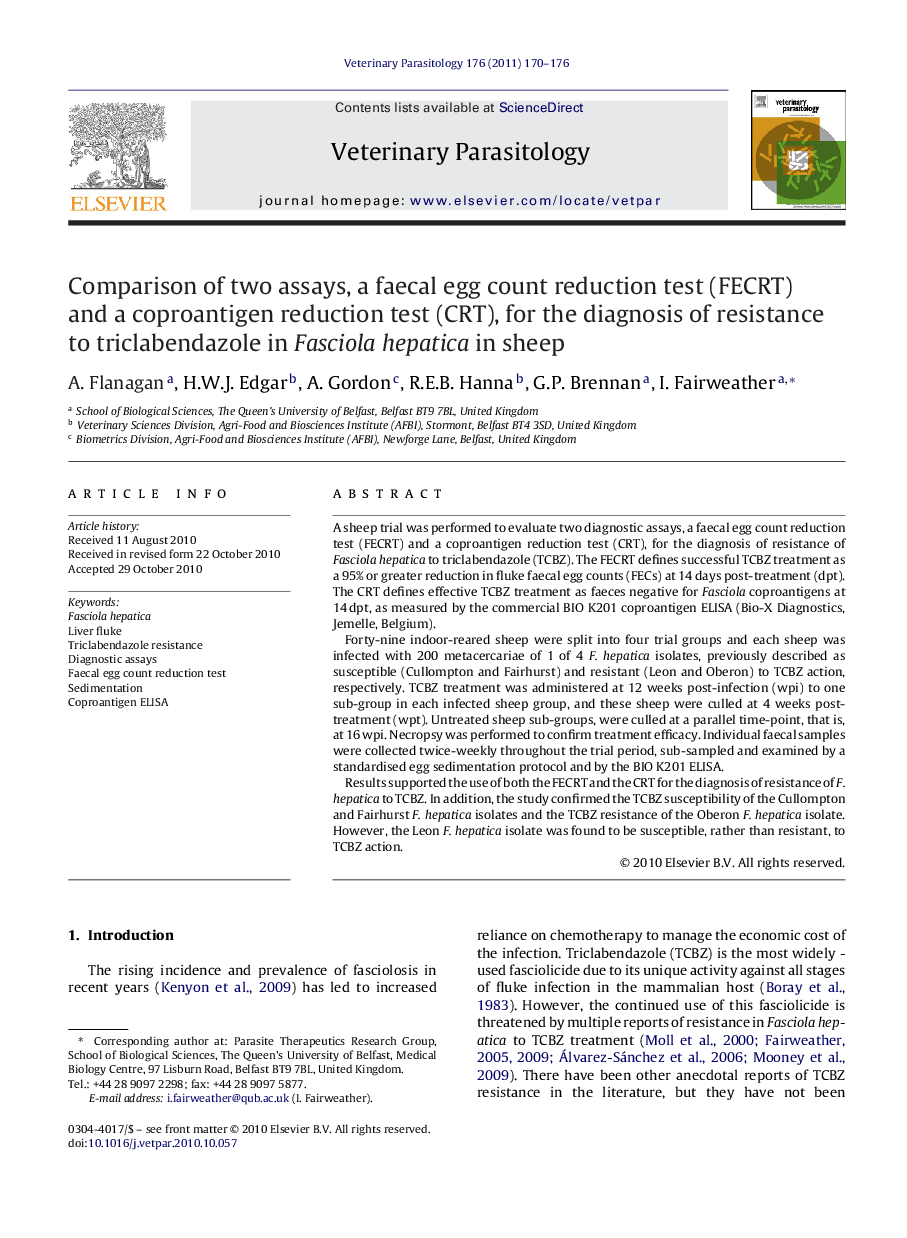| Article ID | Journal | Published Year | Pages | File Type |
|---|---|---|---|---|
| 5805919 | Veterinary Parasitology | 2011 | 7 Pages |
A sheep trial was performed to evaluate two diagnostic assays, a faecal egg count reduction test (FECRT) and a coproantigen reduction test (CRT), for the diagnosis of resistance of Fasciola hepatica to triclabendazole (TCBZ). The FECRT defines successful TCBZ treatment as a 95% or greater reduction in fluke faecal egg counts (FECs) at 14 days post-treatment (dpt). The CRT defines effective TCBZ treatment as faeces negative for Fasciola coproantigens at 14Â dpt, as measured by the commercial BIO K201 coproantigen ELISA (Bio-X Diagnostics, Jemelle, Belgium).Forty-nine indoor-reared sheep were split into four trial groups and each sheep was infected with 200 metacercariae of 1 of 4 F. hepatica isolates, previously described as susceptible (Cullompton and Fairhurst) and resistant (Leon and Oberon) to TCBZ action, respectively. TCBZ treatment was administered at 12 weeks post-infection (wpi) to one sub-group in each infected sheep group, and these sheep were culled at 4 weeks post-treatment (wpt). Untreated sheep sub-groups, were culled at a parallel time-point, that is, at 16Â wpi. Necropsy was performed to confirm treatment efficacy. Individual faecal samples were collected twice-weekly throughout the trial period, sub-sampled and examined by a standardised egg sedimentation protocol and by the BIO K201 ELISA.Results supported the use of both the FECRT and the CRT for the diagnosis of resistance of F. hepatica to TCBZ. In addition, the study confirmed the TCBZ susceptibility of the Cullompton and Fairhurst F. hepatica isolates and the TCBZ resistance of the Oberon F. hepatica isolate. However, the Leon F. hepatica isolate was found to be susceptible, rather than resistant, to TCBZ action.
